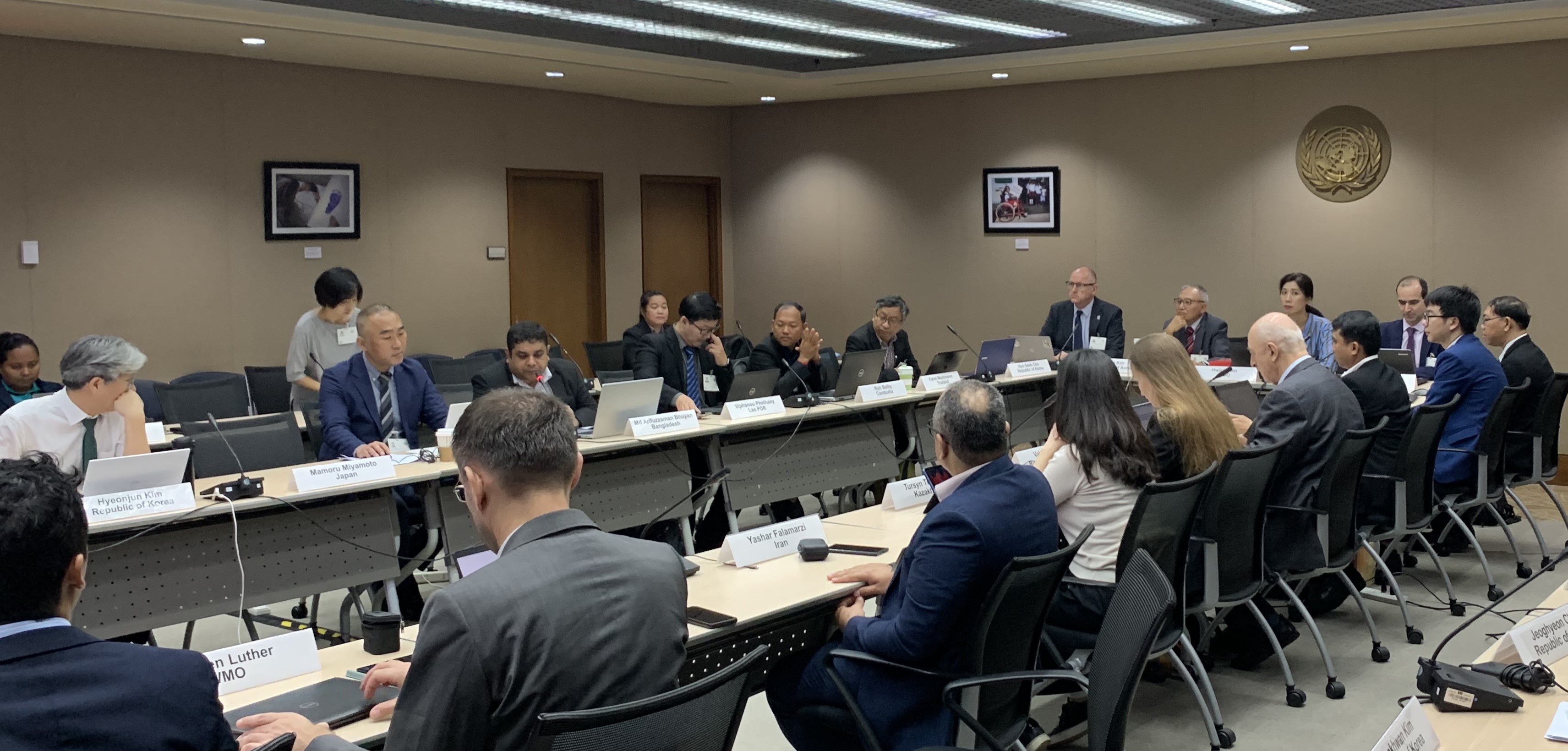First pilot Southeast Asia Hydrological Outlook Forum
BACKGROUND
The Southeast Asian region consists of 10 Member states covering an area of more than 4.5 million square kilometres and with a population of over 600 million. Due to its vast expanse, the climate in the region varies considerably. Broadly, the region can be classified into two sub-areas, namely, continental and insular Southeast Asia. The continental region comprises of Myanmar, Thailand, Lao PDR, Cambodia and Viet Nam and experiences greater seasonality, with more extremes in both temperature and rainfall, and pronounced dry spells. The insular part on the other hand has a more equable climate as compared to the continental part. It is the monsoon influence that is mainly responsible for the climate characteristics of the region (and sub-regions) as a whole.
The region’s climate diversity significantly impacts agriculture, ecosystems and livelihoods and also influences the hydrological characteristics. There are numerous rivers and watersheds, such as the Mekong River, Chao Phraya River, and Irrawaddy River, to name a few, which provide vital resources for agriculture, transportation and energy production. The Monsoon season can bring heavy rainfall resulting in frequent flooding. At the same time, a prolonged dry season adversely impacts water availability in the region. The complex hydrological characteristics along with the consequences brought on by climate change necessitate the need for better planning and management of its vital water resources.
The WMO Global Hydrological Status and Outlook System (HydroSOS) will provide crucial information at different spatial and temporal scales that will help users understand the status and forecasts of the water resources and adapt to any changes by better managing the resources with the help of new technologies and scientific information. To advance the implementation of HydroSOS globally, WMO Members developed implementation plans for their respective regions which were endorsed during the 19th Session of the World Meteorological Congress (Cg-19).
For the Asia region, that comes under Regional Association II of WMO, the HydroSOS implementation plan identifies the piloting of a hydrological outlook forum as one of the key steps. The region was further categorized into four sub-regions namely, (i) West and Central Asia, (ii) South Asia, (iii) Southeast Asia and (iv) East Asia sub-regions based on their geographical and climatic similarities. The South-east Asia sub-region which mainly encompasses the Mekong River countries was chosen as a pilot for the following reasons: (i) ongoing projects that link with HydroSOS; (ii) proximity of the countries to the venue of the meeting (making travel easier);
The Pilot Southeast Asia Hydrological Outlook Forum will be the first in Regional Association II and is expected to guide the replication of similar forums for the other sub-regions in RA II. As a pilot, the forum will delve into identifying the priority areas for discussion that are relevant to the countries. The forum will also invite hydrological experts and HydroSOS focal points from RA V countries (such as Brunei Darussalam, Indonesia, Malaysia, Philippines and Singapore) to join as observers with the aim of expanding the scope to formally include RAV Countries from Southeast Asia region.
OBJECTIVES
The proposed objectives of the first pilot outlook forum are as follows:
-
Review and selection of appropriate hydrological models for seasonal forecasts for the target countries
-
Identification and selection of appropriate products for status and outlooks
-
Establishing a framework and Terms of Reference for future hydrological outlook forums
-
Setting up a core team to lead the hydrological outlook forum and defining their roles and responsibilities.
-
Sustainability of the forum and linkages with existing regional mechanisms such as the Regional Climate Outlook Forum
PROPOSED STEPS
-
For the pilot basins– the HydroSOS focal points from the participating countries should select an appropriate hydro model and input the seasonal outlook (maybe from the pre-monsoon ASEANCOF) to generate some sample hydrological outlooks
-
Identify outlook products – could initially start with water level forecasts (if possible – streamflow forecasts)
-
A few virtual meetings between RHA, HydroSOS focal points, WMO Secretariat and KICT team to provide guidance to the focal points on the identification of a model and with the generation of outlooks.
AGENDA
29th November 2023
Venue: United Nations Conference Centre (UNCC-BKK), Bangkok, Thailand
08:30 – 12:00 (IndoChina Time)
|
Wednesday, 29th November 2023 |
||
|
Time (ICT) |
Item |
Facilitator |
|
08:30 – 09:00 |
Registration |
KICT |
|
09:00 – 09:03 |
Welcome address |
Acting Sub Lt. Thanasith Iamananchai, Deputy Director General, TMD |
|
09:03 – 09:10 |
Opening remarks |
Dr Sung Kim (Regional Hydrological Adviser RA II & Co-Chair RA II CP-Hydrology)
Dr Hwirin Kim (Head, Hydrological and Water Resources Services Division, WMO) |
|
09:10 – 09:20 |
Introduction to the first pilot hydrological outlook forum
|
Dr Sung Kim |
|
09:20 – 09:35 |
Climate outlook products useful for Hydrology in Southeast Asia |
Dr Thea Turkington, Senior Research Scientist (Climate Research), Centre for Climate Research Singapore (CCRS), Meteorological Service Singapore (MSS) |
|
09:35 – 09:50 |
Dr Chin Rattana, Mekong River Commission (MRC) |
|
|
09:50 – 10:50 |
Brief country presentations on hydrological status and outlooks, initiating HydroSOS implementation in the sub-region (focus on main requirements for S2S)
|
National HydroSOS focal points |
|
10:50 – 11:00 |
Coffee/tea break |
|
|
11:00 – 11:30 |
Discussion on how countries can perform their own sub/seasonal to seasonal hydrological prediction (downscaling, appropriate hydrological models) |
All |
|
11:30 – 12:30 |
Discuss about implementation of future hydrological outlook forum to prepare the draft plan
|
All |
|
12:30 – 12:50 |
Draft implementation plan for hydrological outlook forum and way forward |
Dr Sung Kim |
|
12:50 – 13:00 |
Closing Remarks and group photo |
Dr Hwirin Kim |
|
13:00 – 14:00 |
Lunch break |
|
Rapporteur – Nakul Prasad, WMO & Roberto Silva Vara, WMO

